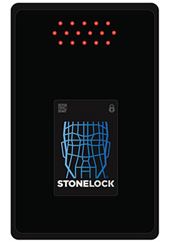01/01/2010
EMEA biometrics market set for growth
London, UK
New analysis from Frost & Sullivan (http://www.autoid.frost.com), EMEA Biometrics Market, finds that the market earned Euro 216.1 million in 2008 and is anticipated to reach Euro 1,058.0 million by 2015, growing at a compound annual growth rate (CAGR) of 25.5 per cent from 2008 to 2015. Technologies covered include: non-AFIS, face recognition, iris recognition, hand geometry as well as voice and signature verification.
"There is great demand for more reliable, accurate and secure measures to validate and authenticate individuals for both physical and network/IT access," notes Frost & Sullivan Industry Analyst Matia Grossi. "Hence, biometric technologies including fingerprint, face and iris recognition are increasingly finding use for physical/logical access control, transactional authentication, time and attendance, travel/identity documents and border control applications."
The convergence of security for physical and logical access control through the use of smart cards with embedded fingerprint biometric technology is a major market driver. It is projected to become the standard in many organisations for secure identity management.
The International Civil Aviation Organisation (ICAO) 9303 mandate and European Commission (EC) 2252 passport regulation will likely push the deployment of biometric passports. Biometric national IDs, driving license and healthcare card schemes are also expected to gain momentum in additional European countries in the next three years.
"The Schengen Visa, which features embedded fingerprint biometric technology, will continue to boost revenues for border control solutions," adds Grossi. "The iris recognition immigration system (IRIS) programme is currently functional in airports including Birmingham, Gatwick, Heathrow, Manchester and Stansted. It is set to be widely adopted in other UK and European airports in the next three to five years."
Customers still perceive biometric solutions as key value additions to their security deployments; however the severe budget cuts on spending for high capital-intensive investments in the current economic climate have negatively impacted the market. For example, the Department of Transportation in the United Kingdom withdrew tenders for the development and implementation of a facial recognition pilot scheme that was intended to develop into a full system in November 2008.
"Biometric vendors need to reiterate the cost benefits of their products," advises Grossi. "They should constantly redefine their product portfolio and the value added services they provide and ensure a faster return on investment (ROI) for the end user."














